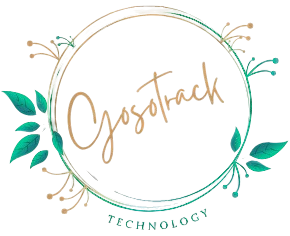Continuing Education Advance your career and gain a competitive edge with our flexible certificate programs and courses. Diabetes is prominent on the Flathead Reservation in Montana, where Payton Dupuis grew up. Now on a path toward biomedical research, she gained both experience and confidence as a visiting student in the MSRP-Bio program at MIT this summer.
- Studying health studies has helped Jaff develop her logic and analytical skills.
- The earliest known use of wind power is the sailing ship; the earliest record of a ship under sail is that of a Nile boat dating to around 7,000 BCE.
- Estimates on the advent of artificial general intelligence vary, but half of machine learning experts surveyed in 2018 believe that AI will “accomplish every task better and more cheaply” than humans by 2063, and automate all human jobs by 2140.
- More examples There were huge advances in aviation technology during the Second World War.
Become a big thinker with real-world perspective, ready to innovate for a better future. The Hon Jaala Pulford, launched the Victorian Government’s new Health-led Manufacturing Innovation Program program at Swinburne’s Factory of the Future, part of the MedTechVic research hub. Swinburne students attended a special address by Ukrainian President Volodymyr Zelenskyy via live video link, followed by a student Q&A with the President. The new $9 million ARC Centre for Next-Gen Architectural Manufacturing will help address the massive amounts of waste and carbon emissions created by the construction industry.
Historical and contemporary movements like neo-Luddism and anarcho-primitivism criticize technology’s pervasiveness, while adherents to transhumanism and techno-progressivism actively support technological change, viewing it as emancipatory. Bioethics looks at ethical issues surrounding biotechnologies and modern medicine, including cloning, human genetic engineering, and stem cell research. Computer ethics focuses on issues related to computing, including artificial intelligence and robotics. Cyberethics explores internet-related issues like intellectual property rights, privacy, and censorship. Nanoethics examines issues surrounding the alteration of matter at the atomic and molecular level in various disciplines including computer science, engineering, and biology. And engineering ethics deals with the professional standards of engineers, including software engineers and their moral responsibilities to the public.
Environment
At SAIT, you’ll be living and studying in one of the safest, most multicultural cities in Canada. To top it off, mountain adventures are just an hour’s drive away. I’m really sad that my course is only two years because I could happily stay here a lot longer than that. SAIT programs benefit from apprenticeship funding Trades cruise into the spotlight with an increase in apprenticeship opportunities and an annual day of celebration. SAIT is committed to building a supportive community for all guided by our strategies to elevate equity, diversity and inclusion, indigenous learner success, andmental health.
Faculty of Agricultural Technology
The EIT brings together leading business, education and research organisations to form dynamic cross-border partnerships. These are called Innovation Communities and each is dedicated to finding solutions to a specific global challenge. EIT Innovation Communities develop innovative products and services, start new companies, and train a new generation of entrepreneurs. Together, we power innovators and entrepreneurs across Europe to turn their best ideas into products, services, jobs and growth.
Existential risk research analyzes risks that could lead to human extinction or civilizational collapse, and looks for ways to build resilience against them. The ethics of technology is an interdisciplinary subfield of ethics that analyzes technology’s ethical implications and explores ways to mitigate the potential negative impacts of new technologies. This was followed a century later by the Second Industrial Revolution which led to rapid scientific discovery, standardization, and mass production. New technologies were developed, including sewage systems, electricity, light bulbs, electric motors, railroads, automobiles, and airplanes. These technological advances led to significant developments in medicine, chemistry, physics, and engineering. They were accompanied by consequential social change, with the introduction of skyscrapers accompanied by rapid urbanization.
Technological utopianism refers to the belief that technological development is a moral good, which can and should bring about a utopia, that is, a society in which laws, governments, and social conditions serve the needs of all its citizens. Examples of techno-utopian goals include post-scarcity economics, life extension, mind uploading, cryonics, and the creation of artificial superintelligence. Major techno-utopian movements include transhumanism and singularitarianism.
Why Jann Wenner Let WIRED Start the Rolling Stone of Tech
The first use of iron alloys such as steel dates to around 1,800 BCE. With this increase in population and availability of labor came an increase in labor specialization. The __cfduid cookie is from CloudFlare where some required files are stored.
Whether Internet technology is “making us stupid” is widely debated. Some argue the Internet is reprogramming our brains for the worse, as seen by diminishing IQ scores, and that new technologies and platforms like the Internet are harming attention spams, the ability to concentrate, and perform simple tasks. For more on the debate about whether the Internet is “making us stupid,” visit ProCon.org.
She’s hoping to keep the population healthy one vial of saliva at a time. Open source software is integral to building a movement toward equality. For DeCausemaker, that meant creating a degree program in the School of Individualized Studies that targeted the specific areas of expertise he needed to craft the career path he wanted.
